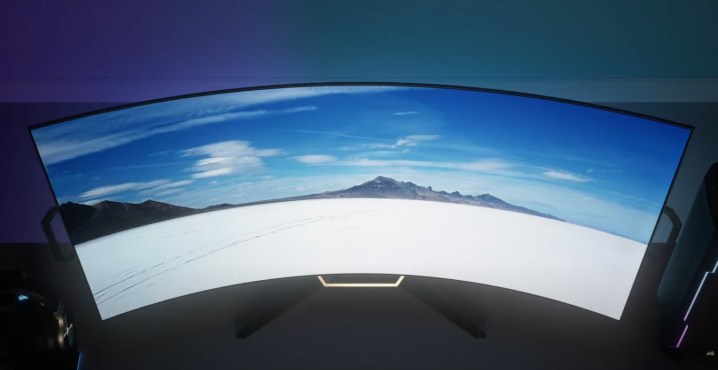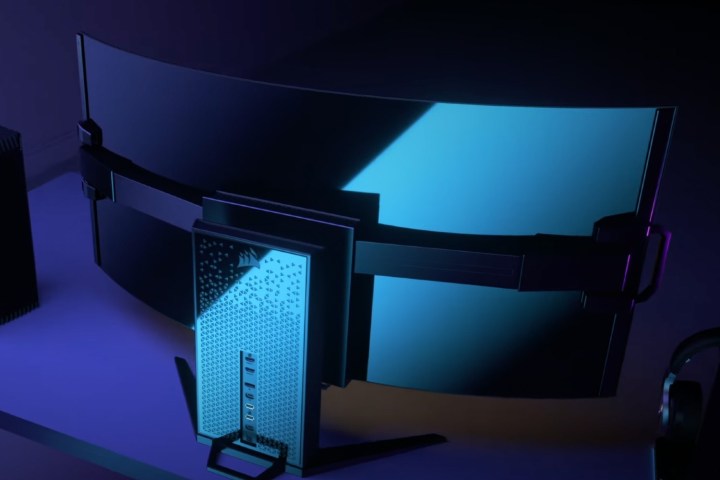We’ve come a long way in terms of PC gaming monitors in only 10 years. Monitors a decade ago depended on LED. Most were big, boxy contraptions with plastic stands. Fast-forward to today as Corsair unveiled its new 45-inch Xeneon Flex bendable OLED monitor at Gamescom in Cologne, Germany.
The Xeneon Flex 45WQHD240 is a flagship monitor with 45 inches of beautiful 3,440 x 1440 resolution. But even more impressive is that if you want to transform the monitor from a flat screen to a curved screen, you simply bend it!
Make no mistake, this monitor is massive. It has an insane 21:9 aspect ratio that delivers cinema-level viewing real estate. This is beyond an ultrawide monitor. We’re not even sure what category of aspect ratio the Xeneon Flex has entered, but it has us drooling.

Couple it with a 240Hz refresh rate and LG OLED technology, and we’ve got a huge monitor that hits up to 1,000 nits of brightness without sweating. That could mean that it’s a capable HDR panel as well. Of course, it’s also compatible with Nvidia G-Sync and AMD FreeSync standards to avoid screen tearing.
And then there’s the fold.
This display can be bent. You can keep it as a flat screen display for watching movies or playing strategy games, but when you need to be immersed in a battle royale FPS, you simply grab the sides and pull them toward you. It can be bent to an 800R curve.

Corsair has always been a gaming enthusiast company, and they’ve delivered products like the Xeneon 32UHD144 monitor, the K70 Mini wireless gaming keyboard, and of course, gaming headphones. But the Fremont, California, company just dropped the world’s first bendable monitor, and now we want one.
Corsair will release availability and pricing details about the Xeneon Flex monitor later this year.



